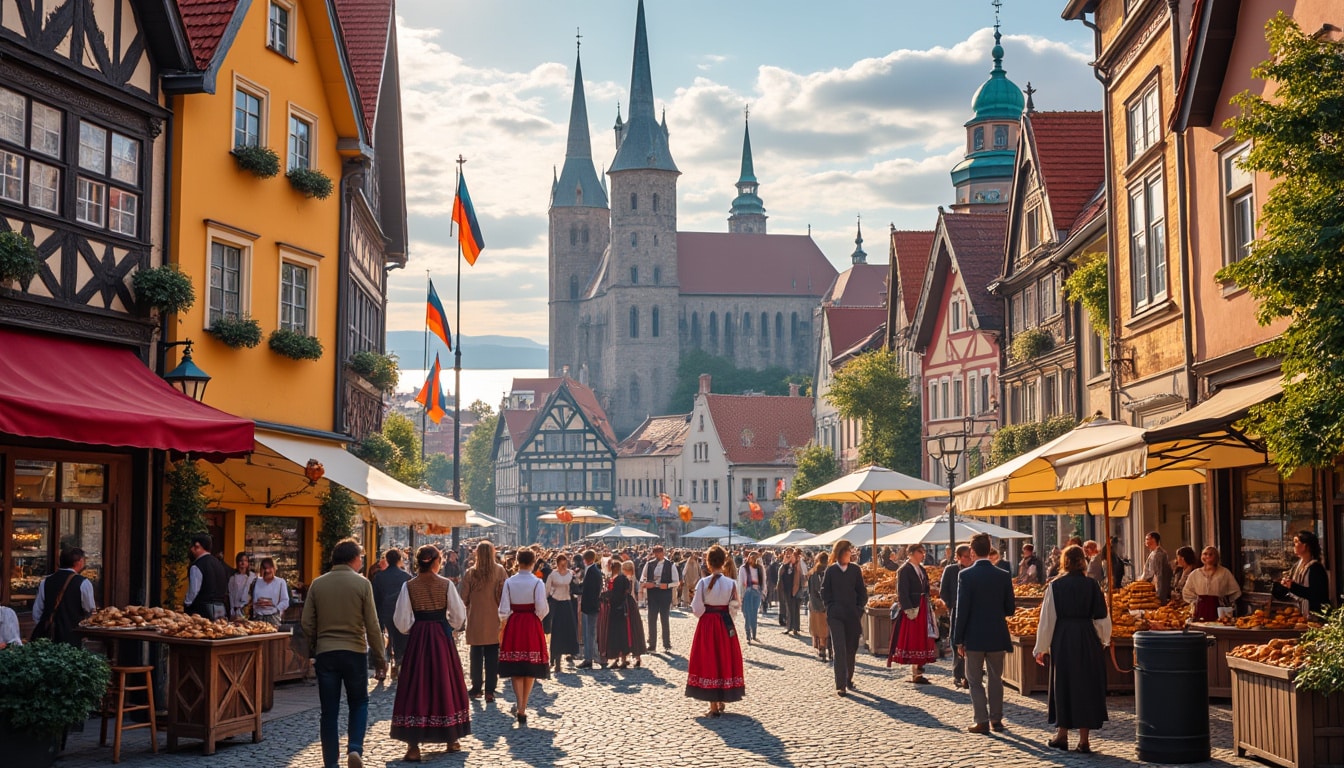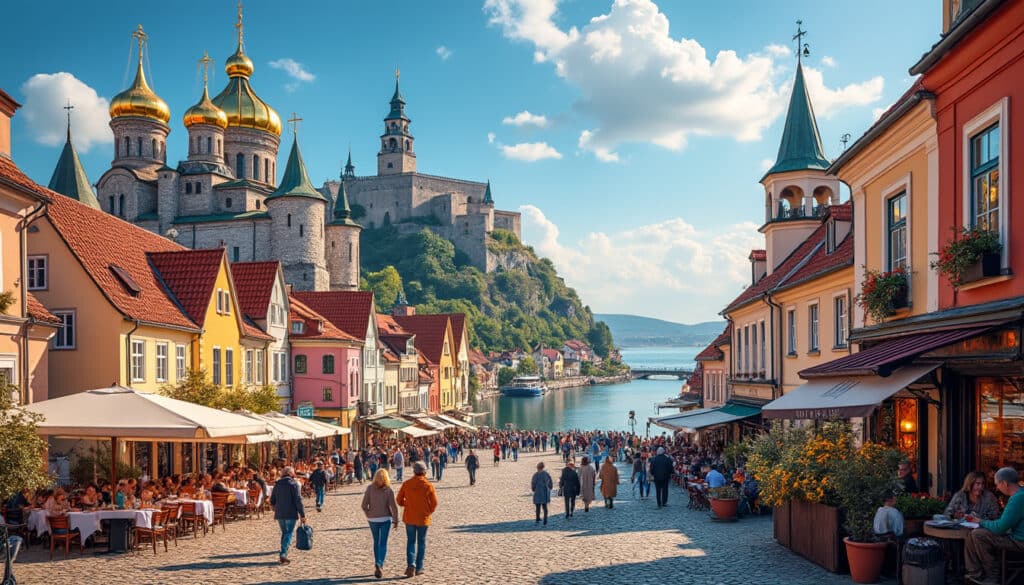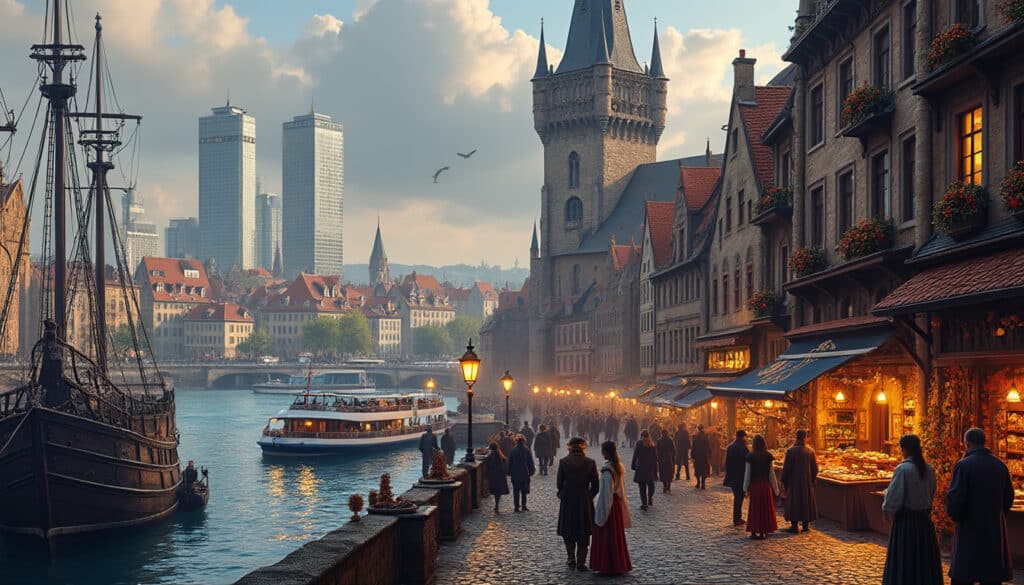With its captivating blend of historical depth and modern dynamism, Tallinn, the capital city of Estonia, stands as a significant European hub. It’s a place where the past and present seamlessly coexist, showcased vividly through its many names and emblems. From the ancient moniker “Kolyvan” to being known as Estonia’s “Medieval Pearl,” each title reveals a rich chapter of the city’s history and identity. The flags and symbols of Tallinn further highlight its evolving narrative, intertwined with tales of medieval conquests, Hanseatic influence, and contemporary innovation. Whether you’re wandering its medieval streets or exploring its more modern innovations, learning about these fascinating elements adds layers to the understanding of Tallinn, making it a unique and compelling destination for both history enthusiasts and modern explorers.
Historical Names of Tallinn: Unveiling its Multifaceted Past
The ancient city of Tallinn boasts a multitude of names, each telling its own unique story about the city’s past. Understanding these names is like flipping through the pages of a rich historical novel, where each title introduces a new era and set of characters. Kolyvan, one of the earliest names, has its origins in Russian chronicles dating back to the year 1223. The name is believed to be linked to the legendary Kalev, a mythic hero whose sons were considered to be either royalty or giants, depending on the cultural viewpoint. This name reveals the city’s deep-rooted connections with Slavic mythology and narratives.
Another fascinating title is Lindanisa, which appears in Danish chronicles. The Danes’ influence in Tallinn’s early history is evident in this name, derived from a place known for trading lime. This name reflects a period of Danish domination following their invasion in the 13th century, a conquest that left an indelible mark on the city’s fabric.

Moving on to Reval, which was predominantly used during the Hanseatic League’s prominence and later under German influence from the 13th to the 20th century. This name not only highlights the city’s economic significance during medieval times but also its role as a key player in the network of Hanseatic trading centers. The origin is speculated to be from the medieval county of Rävala, revealing geographical and administrative connections.
The name Quwri (or Qlwn), mentioned in the Tabula Rogeriana by Muhammad al-Idrisi in 1154, describes Tallinn as a “small town resembling a large castle.” Though not universally accepted by historians as the precursor to Tallinn’s modern name, this suggests an early medieval settlement known for its fortifications among the Astlanda’s towns.
Lastly, Rafala is believed to stem from the Icelandic revisitation of Rävala/Reval. This name shows Tallinn’s connection with the Nordic countries, potentially signifying cultural and trade interactions.
Overview of Historical Names
| Year | Name | Origin | Significance |
|---|---|---|---|
| 1223 | Kolyvan | Russian Chronicles | Mythic and Slavic roots |
| 13th Century | Lindanisa | Danish Chronicles | Danish influence and trade |
| 13th-20th Century | Reval | Hanseatic League | Medieval economic significance |
| 1154 | Quwri | Tabula Rogeriana | Early medieval settlement |
| Medieval Times | Rafala | Icelandic Countries | Norse cultural ties |
These fascinating historical names not only illustrate Tallinn’s rich past but also reveal the cultural exchanges and conquests that have shaped its current identity. Knowing these names helps to appreciate Tallinn’s complex heritage, making it more than just a stop on the map, but a destination filled with stories waiting to be uncovered.
Modern Nomenclature: Reflecting a City in Transition
As Tallinn moved into the modern era, its names evolved to reflect its changing identity. The name Tallinn itself, officially adopted in 1918, is deeply rooted in the city’s past. Stemming from “Taani linn,” which means “Danish castle,” it acknowledges the Danish conquest while celebrating the city’s independence and maturity as Estonia’s capital. This shift was especially pronounced after regaining independence from the Soviet Union in 1991, marking a significant transformation in the city’s stance on the global stage.
Another modern name, Pealinn, translates to “capital city” in Estonian. This straightforward and colloquial nickname emphasizes Tallinn’s significance as the political and cultural heart of Estonia, highlighting its current central role in national affairs rather than historical connotations.
Perhaps the nickname The Silicon Valley of Europe is the most revealing about Tallinn’s aspirations and achievements in the 21st century. With the city’s rapid technological advancements and its thriving start-up ecosystem, this title showcases Tallinn as a beacon of innovation and digital prowess, much like its American counterpart across the Atlantic.
Further enhancing its romantic allure, The Medieval Pearl is a name associated with Tallinn due to its well-preserved medieval Old Town. This picturesque part of the city is a UNESCO World Heritage site, comprising cobblestone streets, historic buildings, and stunning medieval architecture that attract thousands of tourists annually. Other than its aesthetic appeal, the historical integrity of Tallinn Old Town offers a window into the past, blending seamlessly with its vibrant present.
Modern Names and Their Meanings
- Tallinn 🌍 – Derived from “Danish castle,” reflects its historical roots and national independence
- Pealinn 🏛️ – Meaning “capital city,” emphasizes its status in Estonia
- The Silicon Valley of Europe 💻 – Highlights its role in technological innovations and start-ups
- The Medieval Pearl ⚜️ – Symbolizes its magnificent medieval charm and heritage
These modern names underscore Tallinn’s remarkable journey from a medieval stronghold to a modern metropolis. They capture the city’s vibrant evolution and continued significance in the digital age, offering residents and visitors alike a multifaceted experience that is both historically rich and contemporarily relevant.
The Symbolic Flags of Tallinn: Emblems of Heritage and Pride
The flags of Tallinn serve as powerful visual statements of the city’s identity and history. The flag of Tallinn itself consists of three blue and three white equally sized horizontal bars, with a specific ratio of 2:1. This design roots back to the three blue lions of the coat of arms, reflecting the legendary and historical narrative that is linked with the city of Reval. Such symbols are testimonials to the medieval past and the city’s strategic importance through the ages.
The colors of the Estonian national flag, prominently visible throughout Tallinn, hold profound meanings. The blue symbolizes faith and loyalty, qualities intrinsic to Estonian identity. White represents purity, hard-won freedom, and unity, while black signifies the dark periods of oppression throughout the nation’s history. These colors not only wave over its capital city but are embedded in the hearts of its inhabitants, serving as reminders of their tenacity and pride.
Besides the main flag, various districts in Tallinn have their own flags and coats of arms, emphasizing the rich diversity even within the city’s boundaries. For instance, the Kesklinn (City Centre) district adopted a new flag recently, symbolizing the city’s commitment to upholding its historical districts while embracing modern urban development.
Flags and Symbols of Tallinn
- Tallinn City Flag 🚩 – Three blue and three white horizontal bars, rooted in historical symbolism
- Estonian National Flag 🇪🇪 – Blue (loyalty), black (history), white (purity), embody national identity
- District Flags 🏳️ – Reflect diverse local identities and historical significance within the city
The flags serve not just as identifiers but as potent symbols of resilience, history, and modern progress. They narrate the enduring spirit of Tallinn, illustrating how this city has balanced preservation with innovation throughout its historical journey.
Emblems and Trademarks: Beyond Flags in Defining City Identity
Apart from flags, Tallinn employs a variety of emblems and trademarks that contribute to its distinctive identity. These symbols are not only artistic representations but also tools that convey cultural and historical narratives, used across various platforms such as publications, souvenirs, and media presentations.
One such symbol is Tallinn’s coat of arms, which features prominently throughout the city. This icon has variations including a large version used for more formal representations and a simplified one for everyday use. It further entrenches the city’s identity in its medieval past, linking it to historical narratives while fostering a sense of pride among its citizens.
Moreover, the city has embraced the modern need for visual identity through elements like the Tallinn Design House, which showcases local creativity and design while preserving traditional aesthetics. This institution supports local artists and designers in showcasing their work, promoting Tallinn as a vibrant hub of culture and modernity.
Symbols and Their Significance
| Symbol | Description | Use |
|---|---|---|
| Coat of Arms 🔰 | A symbol of medieval heritage | Formal representations and city events |
| Tallinn Design House 🏛️ | Showcase of local creativity | Supporting local artists and designers |
| City Trademarks 🌟 | Various symbols used in media and souvenirs | Promote city identity and tourism |
These emblems go beyond mere aesthetics, acting as cross-generational links that bridge Tallinn’s noble history with its progressive present and future aspirations. They serve as constant reminders of the city’s enduring journey through time, reflecting its vibrancy and modern innovation.
Tallinn’s Identity in Festivals and Celebrations
The rich cultural tapestry of Tallinn is beautifully showcased through its festivals and celebrations, serving as dynamic expressions of its identity. Among these, the Tallinn Black Nights Film Festival has gained international acclaim, drawing film enthusiasts and creators from around the world to celebrate cinematic art in the serene yet vibrant landscape of the city.
During these events, the city comes alive with an extensive lineup of films, exhibitions, and workshops, showcasing Tallinn’s commitment to fostering cultural dialogue and global engagement. The festival is a testament to the city’s evolution as a modern cultural hub, while still holding onto its unique traditions.
Another significant cultural marker is the Estonia National Museum, which not only serves as a custodian of the nation’s rich history but also as an active venue for cultural celebrations and educational programs. This institution embodies Tallinn’s enduring passion for its history and heritage, offering valuable insights into the nation’s past while being central to contemporary cultural life.
Cultural Expressions and Their Role
- Black Nights Film Festival 🎬 – Celebrates international cinema, engages global audiences
- Estonia National Museum 🏛️ – Preserves history, hosts cultural events and educational programs
- Tallinn Craft Beer Festival 🍺 – Showcases local brewing culture and social engagement
These festivals and cultural institutions are pivotal in keeping the spirit of Tallinn alive and thriving. They act as conduits for fostering a sense of community, involvement and celebrating the diverse tapestry that defines the city.
Tallinn’s FAQs
-
What are some of the historical names of Tallinn? 🏰
Some of the historical names include Kolyvan, Lindanisa, Reval, and Rafala, each reflecting different eras of Tallinn’s past.
-
What are the meanings behind the Estonian flag colors? 🇪🇪
The blue stands for faith and loyalty, white for purity and unity, and black symbolizes historical oppression and resilience
-
How does Tallinn celebrate its culture? 🎉
Through festivals and institutions like the Black Nights Film Festival and the Estonia National Museum, promoting both traditional and modern cultural expressions.
With this newfound understanding of Tallinn’s various names, flags, and emblems, one can appreciate its multifaceted identity. From historical conquests to modern technological achievements, Tallinn stands as a beacon of history and innovation, drawing locals and tourists alike to its vibrant cityscape.
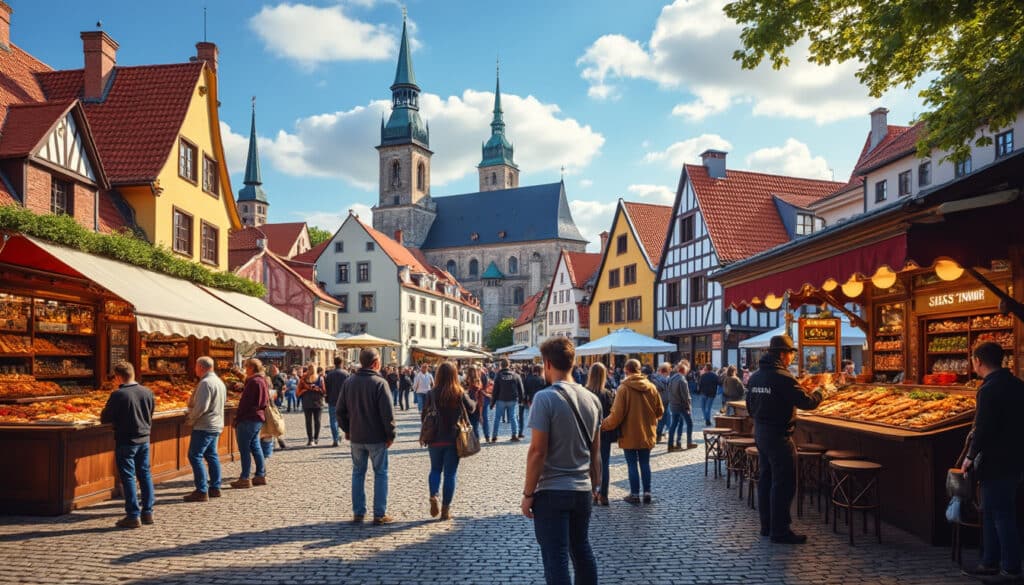
Fun Facts & Curiosities About Tallinn
The picturesque capital of Estonia, Tallinn, is a treasure trove of history, innovation, and delightful surprises. Whether you’re fascinated by medieval architecture or intrigued by modern technological advancements, Tallinn offers a blend of old-world charm and futuristic innovation. From its…
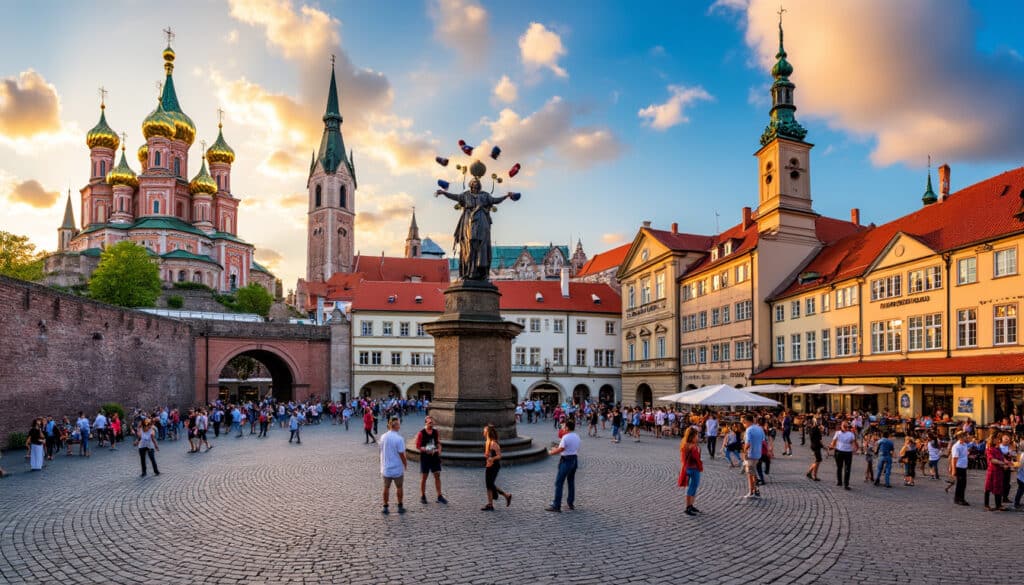
Architecture and urban features of Tallinn
As one wanders through the enchanting streets of Tallinn, Estonia’s capital, they are met with a city that is a tapestry of ancient and modern elements woven together through its architecture and urban features. Known for its well-preserved medieval Old…
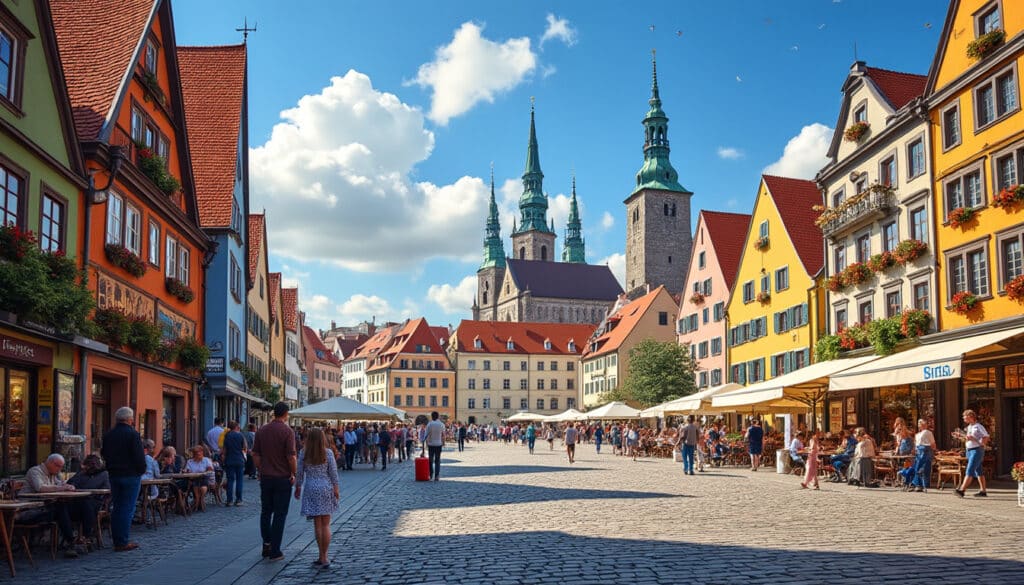
Welcome to the captivating city of Tallinn, where daily life intertwines with rich history, vibrant culture, and modern digital advancements. This Estonian capital, with its medieval Old Town and bustling contemporary neighborhoods, offers a unique blend of experiences for both…
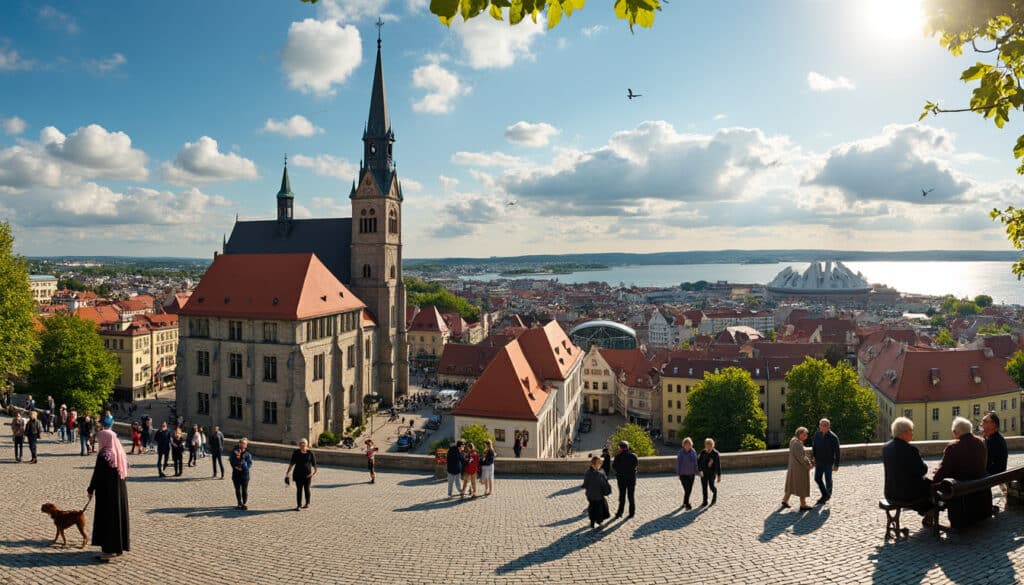
Demographics and geography of Tallinn
As the capital of Estonia, Tallinn stands as a beacon of Baltic history, culture, and modern innovation. Nestled on the northern coast of the country, facing the Gulf of Finland, this vibrant city is more than just its medieval charm—it…
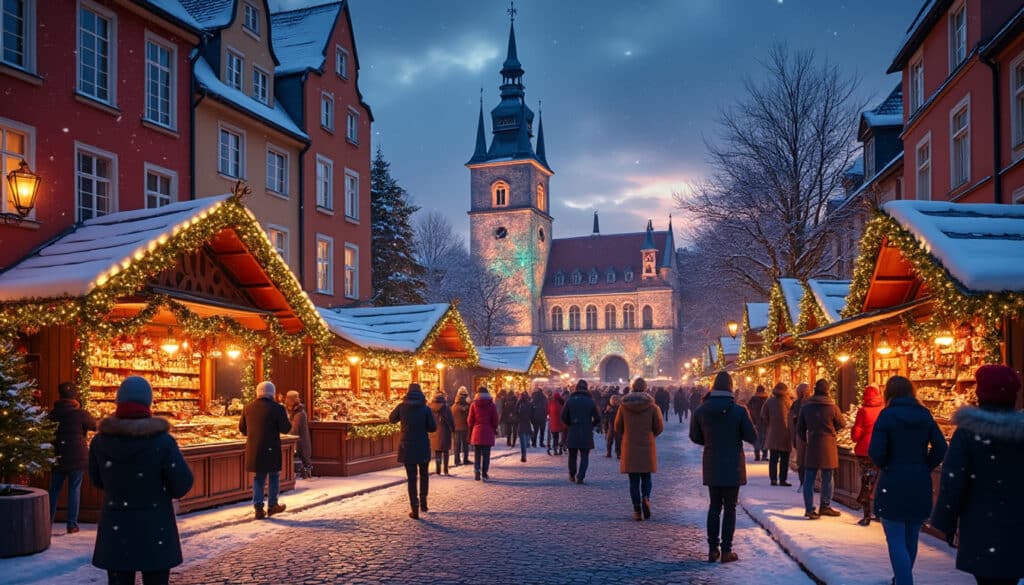
Holidays and celebrations in Tallinn
Explore the enchanting city of Tallinn, Estonia, where history and modernity blend seamlessly to offer myriad holidays and celebrations. From the vibrant Tallinn Christmas Market to significant national holidays, the capital of Estonia opens its heart to both locals and…
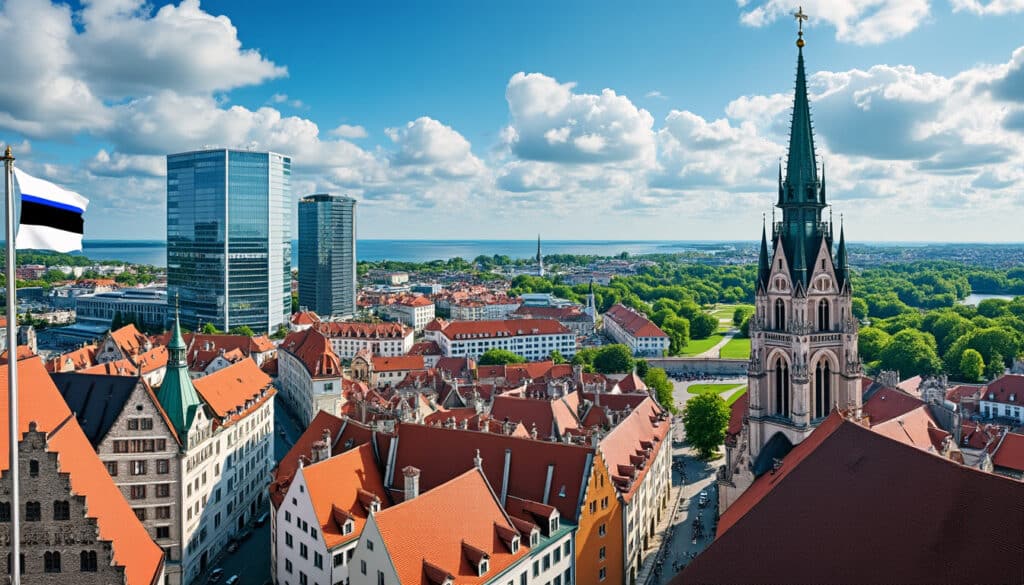
Language and spelling of Tallinn
Tallinn, the capital city of Estonia, is not only a hub of architectural beauty and cultural richness but also an intriguing subject when it comes to its language and spelling. Nestled on the northern coast of the country, this city…
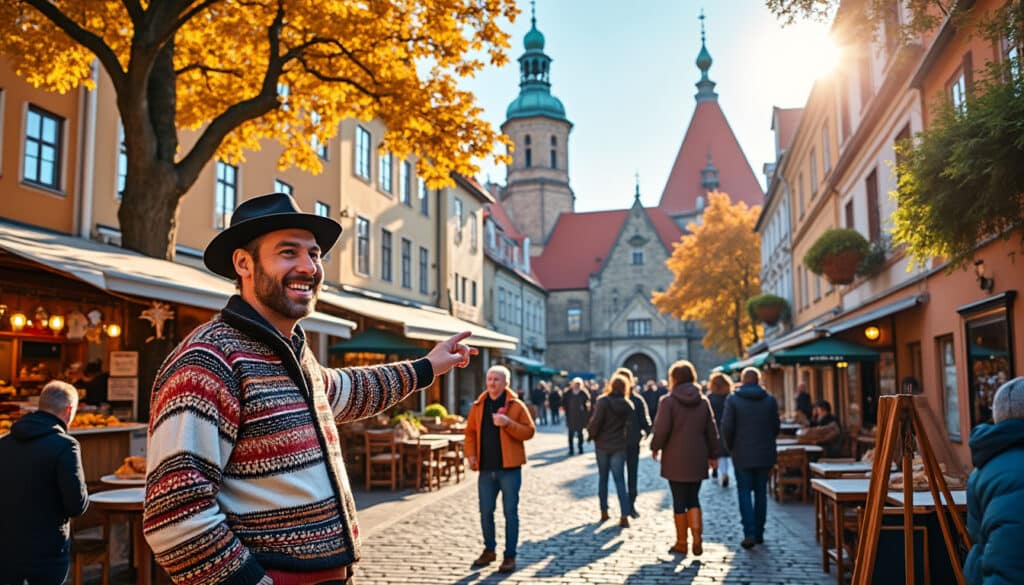
Local tips for tourists in Tallinn
Planning a trip to Tallinn, Estonia’s charming capital, might seem daunting given its rich offerings and relatively small size. Tallinn is a delightful blend of medieval architecture, modern innovation, and cultural enchantment. With a friendly population and rich history, this…
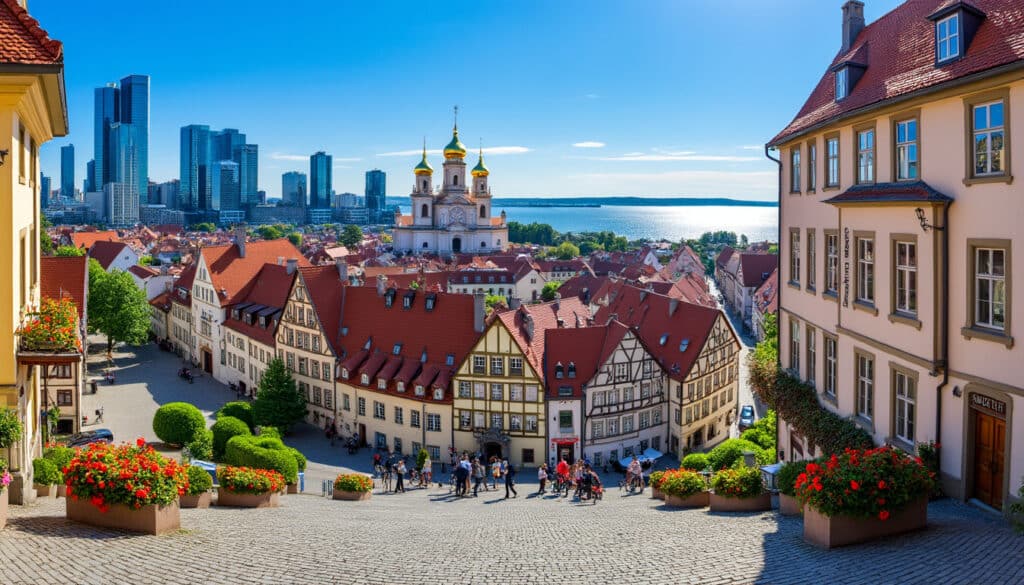
Reputation and identity of Tallinn
Tallinn, the capital city of Estonia, is a vibrant blend of medieval charm and digital innovation that captivates travelers from around the globe. Nestled on the northern coast of the Baltic Sea, this picturesque city has become a beacon of…
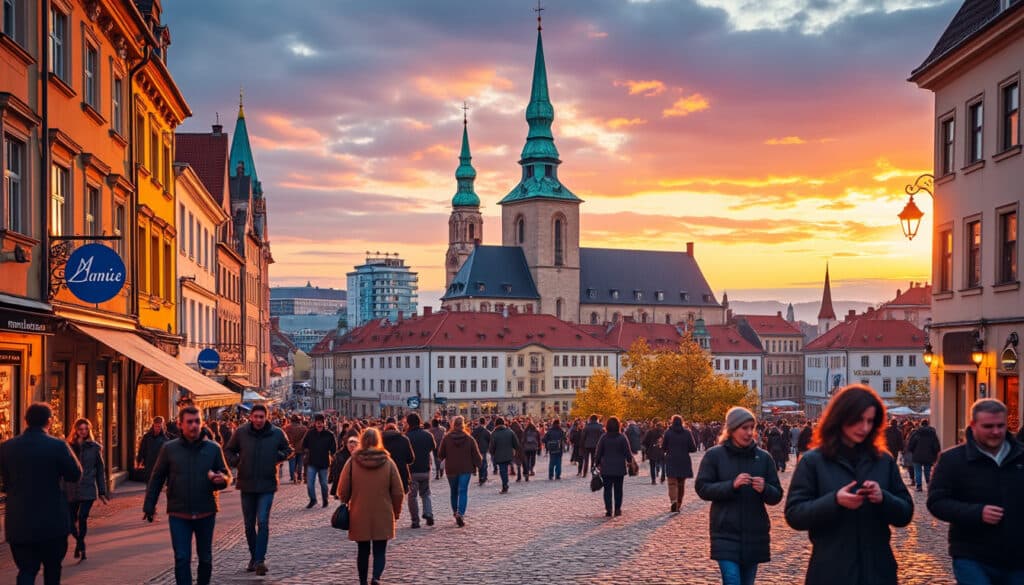
Located at the northeastern edge of the Baltic Sea, Tallinn, the capital of Estonia, is a city where time embraces both tradition and modernity. Known for its charming medieval old town and vibrant cultural scene, Tallinn is a city steeped…
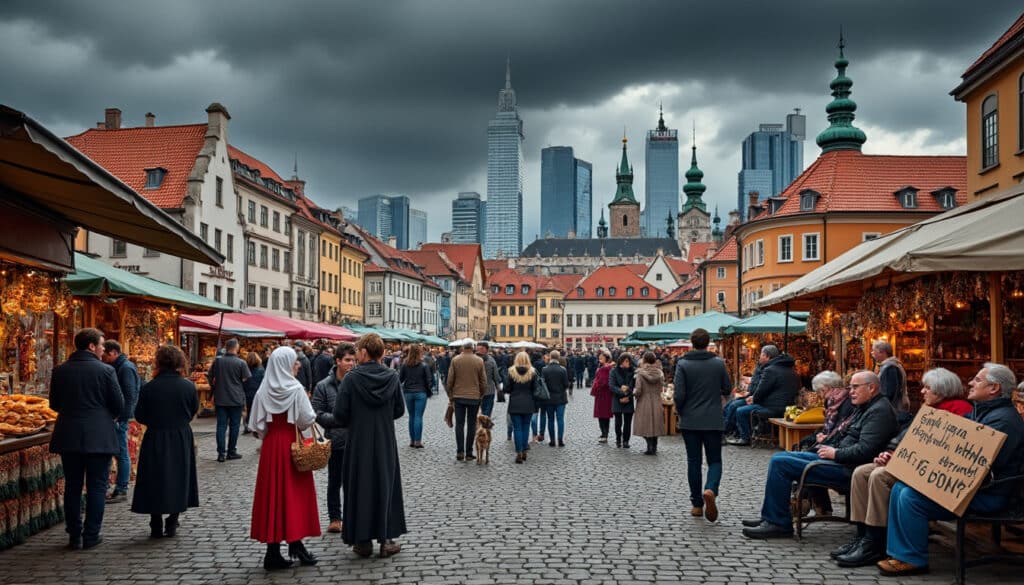
Unusual facts and social issues in Tallinn
The capital city of Estonia, Tallinn, offers a unique blend of medieval charm and futuristic innovation, making it a fascinating destination for both tourists and residents alike. Hidden within its cobblestone streets and modern advancements lie intriguing secrets and social…
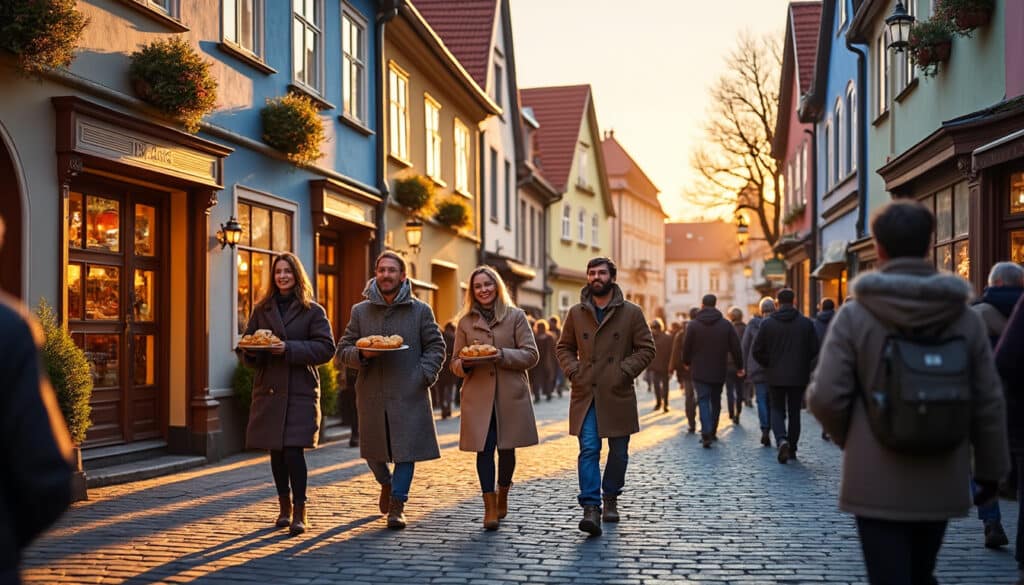
What does Tallinn look, smell, feel like?
Nestled in the northeastern part of Europe, Tallinn, the capital of Estonia, is a city that effortlessly marries the charm of its medieval past with the vibrancy of its present-day innovations. Visitors often speak of its cobblestone streets that wind…

